#Allium fistulosum
Explore tagged Tumblr posts
Text

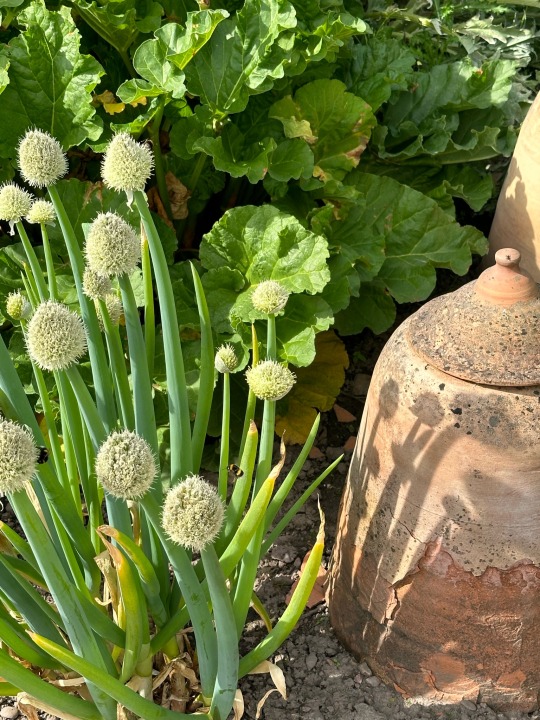

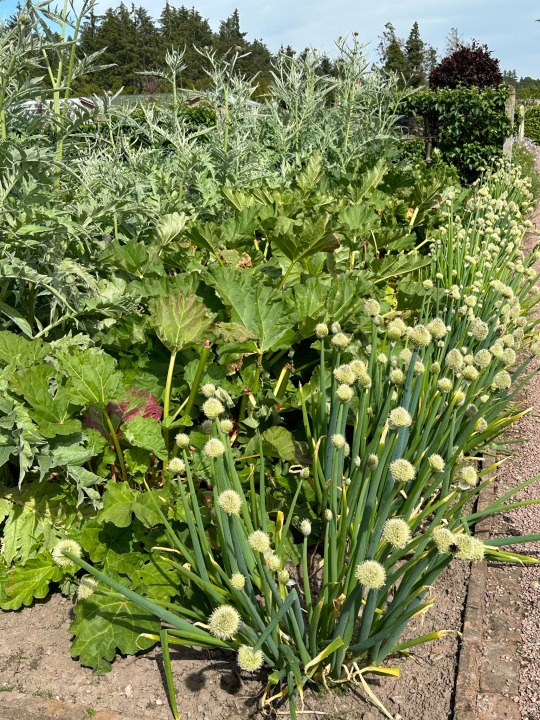
Plant of the Day
Tuesday 2 July 2024
The walled garden at Gordon Castle, Scotland, has used Allium fistulosum (Welsh onion, bunching onion, long green onion, Japanese bunching onion, onion-leek, stone leek) as an edging plant. The leaves of this decorative 'cut and come again' onion can be used in a similar way to chives (although their flavour is stronger) while the flower shoots (which are not as pungent as onions) can be added to salads.
Jill Raggett
#allium#Welsh onion#bunching onion#long green onion#Japanese bunching onion#onion-leek#stone leek#vegetable garden#vegetables#walled garden#Gordon Castle#plants#horticulture#gardens#garden#scotland#pollinator friendly#bee#productive garden
123 notes
·
View notes
Text
Spring Onion
Allium fistulosum is a species of perennial plant in the family Amaryllidaceae, an ingredient in Asian cuisine. It is called negi in Japanese and its earliest reference is from Nihon Shoki, Shinto manuscript compiled in 720. Inflorescence bloom from unharvested negi in late spring, called negibouzu.
11 notes
·
View notes
Text

韮[Nira] Allium tuberosum
Chinese chive. There is a kanji 韭, which is a variant of 韮, reading the same and it represents Nira that grows from the earth.
It had been called mira, written みら and is today written にら in hiragana, so is called 二文字[Futamoji](Two letters.) 葱[Negi](Allium fistulosum, spring onion) had been called ki and written き in hiragana, so is called 一文字[Hitomoji](One letter.) Such words are called 女房言葉[Nyōbō-kotoba](The language of court ladies) https://en.wikipedia.org/wiki/Nyōbō_kotoba
Nira and Negi are very common foodstuffs, but they are called 葷[Kun] and should not be eaten in the Buddhist cuisine.
13 notes
·
View notes
Note
Not all green onions (scallions) are immature! Most in the US are "bunching onions" which will never form bulbs - instead they simply split and spread.
They're excellent for the home gardener because of this - you can plant a patch of them and harvest them indefinitely. In the UK where I now live, they're somewhat seasonal and the stores will sell either immature onions OR bunching onions as "salad onions" depending on the season.
Shallots vary quite a lot in both flavor and size. In my experience most are quite mild, but every now and then you'll get a batch that are so strong you'll still be tasting them a day later. They can also be anything from the size of a large marble to as big as your hand. I would guess this is due to some combination of the variety and growing conditions, but I've never tried to grow shallots to find out.
Lots of recipes call for shallots for a milder onion flavor in a form that will still cook similarly to an onion. The ones available in the US are usually quite small and round and mild but expensive, and most easily substituted with green/bunching onions. In the UK, shallots tend to be larger and more elongated, sometimes 4-5" long and slightly stronger flavored to downright "kick you in the teeth".
As for leeks, I definitely agree that they should be cooked - they tend to be more fibrous rather than crunchy, which isn't nice when raw. They're delicious slow-cooked with butter, though. A passable substitute for sweet onions if you're in the UK where sweet onions are generally unavailable.
Garlic chives are also a thing! They look similar to regular chives, I.e. like a clump of grass, but have flat leaves instead of round hollow ones and a distinct garlicky flavor/scent.
Both types of chives are wonderful. If you're like me and don't enjoy raw scallions, they make an excellent substitute. They're very easy to grow, provide a perpetual harvest, and are perennial in mild climates or if you bring them indoors during the winter. I highly recommend growing them, even if you just have a small pot on a windowsill. Harvest them simply by cutting a small bunch of leaves off with a pair of scissors and then using the scissors to cut them up directly over whatever you want to eat them with, it's very convenient. The flowers are edible and look quite pretty in a dish, but they're a bit too papery for me to enjoy, personally.
how does one go about choosing what kind of onion they want to use? i'm at that stage of cooking where i feel comfortable freehanding stuff but i don't have a decision process for white/yellow/red onion beyond what's already in my fridge, lol.
Yellow Onion: Good all-around, general use onion. Good for Caramelizing, and just about any onion need.
Sweet Onions (Vidalia): A particularly mild version of a yellow onion, grown around Vidalia, Georgia. Crunchy and sweet! Walla Walla is another brand of sweet onion, grown in Washington, USA. Can be eaten like an apple tbh. REALLY GOOD for people who are sensitive to the strong flavor of onion.
White Onion: A little sweeter and milder than the yellow onion, but not as sweet as a sweet onion. Good for dicing and serving raw if you don't have red onion. Yellow and White onions are pretty much interchangeable.
Red Onion: Great Raw! Have a bit of spice to them, and make a very interesting savory flavor when cooked. (Red onion skins can be made into a dye!)
Green Onions/Scallions: Immature onions with white bottoms and green tops. Usually diced/sliced and used raw as a garnish or a mild raw onion flavor. Can be used to replace raw onion in bulk for a milder alternative.
Chives: Tinier, punchier alternative to green onions/scallions. While in the same Allium family as the rest of these, they never get bigger than their little grassy figure. Teeeeny tiny! Great for adorable garnishes and just a hint of onion in a salad. Not good for cooking with, they get bitter fast.
Shallots: Garlicky! Kinda a halfway point between 'onion' and 'garlic'. They stay small when fully matured, and have quite a bite when used raw. Cooked, they become mellow and have a less-intense garlic-onion flavor. Often used in sauces where you want a little onion and garlic flavor, but subtly. They're REALLY good roasted.
Leek: Basically like a giant green onion, except they're always like that. Can be used in place of Onion in nearly any recipe that doesn't require caramelization. Fun slice shape! Gentle onion flavor without a lot of bite. Best when cooked, not raw imo.
Kurrat (Egyptian Leek): Like a stronger, punchier version of the leek. Excellent roasted, sauteed, used in soups - very strong flavor and KEEPS its flavor, so its usually used in smaller quantities than other alliums.
2K notes
·
View notes
Text
Cebolinha-francesa (Allium schoenoprasum)
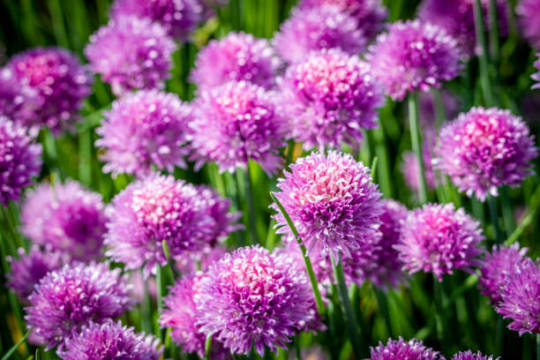
Nome Científico: Allium schoenoprasum Nomes Populares: Cebolinha-francesa, Cebolinho, Ceboletas-de-frança, Cebolinha, Cebolinha-galega, Cebolinha-miúda Família: Amaryllidaceae Categoria: Bulbosas, Ervas Condimentares, Flores, Flores Perenes, Plantas Hortícolas Clima: Continental, Mediterrâneo, Subtropical, Temperado, Tropical Origem: Europa Altura: 0.1 a 0.3 metros Luminosidade: Meia Sombra, Sol Pleno Ciclo de Vida: Perene
Sobre a Cebolinha-francesa
Cebolinha-francesa é uma espécie de planta perene que pertence à família de Amaryllidaceae. Esta planta possui um bulbo comestível que é utilizado como uma planta medicinal e como uma planta ornamental. Cresce numa variedade de habitats em regiões temperadas que incluem prados rochosos húmidos, encostas montanhosas húmidas e em vales que normalmente se encontram ao longo de aterros de riachos que surgem do nível do mar até uma elevação de 2.400 m ou mais. Prefere um solo húmido, bem drenado mas fiável, rico em sedimentos orgânicos, a solo arenoso ou calcário, ligeiramente ácido a ligeiramente alcalino, com um pH entre 6,0 e 7,0, mas adaptável. Cresce numa posição aberta, de sol a semi-sombrio e é tenro à seca mas tolerante ao frio, com uma temperatura mínima preferida durante o período de crescimento activo de 6ºC. Esta cebola gigante é uma das maiores cebolas ornamentais. Sua bulbosa perene ocorre em uma roseta com basais folhas de cor verde-acinzentada. Na Primavera surge do centro da roseta uma inflorescência com pequenas flores roxas. Deve ser cultivada sob sol pleno ou meia sombra, em qualquer tipo de solo, preferencialmente drenável, fértil, enriquecido com matéria orgânica e irrigado regularmente. A cebolinha francesa não deve ser confundida com a cebolinha comum (Allium fistulosum), de origem asiática.
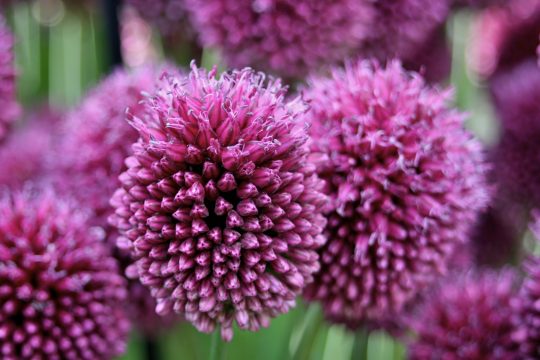
A germinação da Cebolinha-francesa ocorre entre 6 a 14 dias Deve ser cultivada sob sol pleno ou meia sombra, em qualquer tipo de solo, preferencialmente drenável, fértil, enriquecido com matéria orgânica e irrigado regularmente. Prefere um solo húmido rico e bem drenado, pH 5,5 - 7. Após o plantio por sementes, as cebolinhas estarão prontas para a colheita em cerca de quatro meses. Este perene cresce até 2 metros de altura e servem de alimento para os pássaros, abelhas e borboletas. A cebolinha-francesa não deve ser confundida com a cebolinha comum (Allium fistulosum), de origem asiática. A espécie francesa apresenta aroma mais suave e folhas menores e mais delicadas. Apesar disso, a espécie europeia pode ser utilizada nas mesmas preparações que a comum, pois tem aroma semelhante. A germinação ocorre entre 6 a 14 dias. Após o plantio por sementes, as cebolinhas estarão prontas para a colheita em cerca de quatro meses. Por ocasião da colheita corte as folhas sempre à 2 cm do solo. Assim, estimula-se novas florações e o bulbo é preservado. As podas periódicas ajudam a prevenir que a planta floresça também. Por ocasião da colheita corte as folhas sempre a 2 cm do solo. Assim, estimula-se novas florações e o bulbo é preservado. Use a cebolinha francesa em sopas, saladas frescas ou de batatas, omeletes, molhos, patês, manteiga, queijos, polpa de tomate, arroz e carnes assadas.
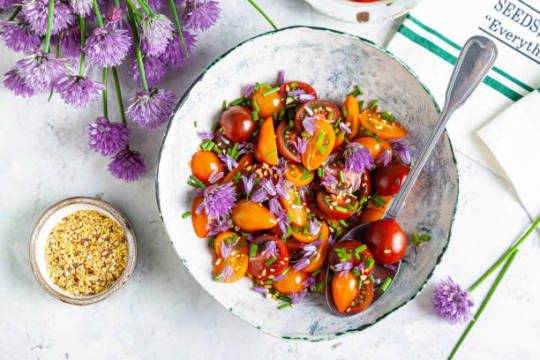
As podas periódicas ajudam a prevenir que a planta floresça também A floração ocorre na primavera e verão, evidenciando inflorescências, bastante ornamentais, que parecem pequenos pompons acima da folhagem. As flores são hermafroditas e apresentam brácteas papiráceas, cor-de-rosa. Elas são nectaríferas, atraindo abelhas e borboletas. Mais Info: https://pt.wikipedia.org/wiki/Allium Read the full article
0 notes
Text
0 notes
Text
Hatsune Miku (NPC ; Fictional) (Biologist ; Geneticist)
After a nasty televised incident with bacterial contamination, this world-renowned pop idol / scientist is determined to teach proper lab safety to the youngin's. And hopefully erase everyone's memory but who could forget that?
STATS
First Encountered at ; (Lv 39)
Health : 9
Strength : 1
Endurance : 9
Intelligence : 3
Fortitude : 2
Stamina : 7
Wit : 9
Specializations
Majors
Biology ; Genetics | Social Science ; Sci Comm
Minors
Geology ; Pedology | Chemistry ; Physical Chem
Equipment
Auto Pipette (Weapon)
+ 15 accuracy
+ 5 Chemisty Damage
+ 5 Biology Damage
Lab safety glasses (PPE)
+ 6 Endurance
- 2 accuracy
Blocks certain accuracy lowering effects
Negi (Allium fistulosum) (Consumable item)
+ 2 Health
Cures Bacterial contamination
Prevents Sulphuric Odour for 2 turns
Signature move
GMO Polka (Support effect) (Biology ; Genetics)
The user grows Negi (Allium fistulosum) into the pockets of allies through Xylolinguistic song. Sure to cure broken hearts and common colds. Affected by Tilling 'Till Fertile Terrain effect.
Equipped abilities
Xylolinguistics
Globe trotter
Voice Projection
Key moves
Tilling 'Till Fertile
Xylosymphony
Protein shake up
Phylogenetic Grafting
CRISPR Draw
Bacterial contamination
Ethanol Scrub
Hydromonoxide cleanse
Audio Lecture
Technobabbel
Poster Pop Up
Live Presentation
X Discipline Translation
Thanks @runegod for the distraction to my nerves before I had my scholarship interview today.

lab miku says !
#Are people going to get the referances in her STATS? Are they even good referances? IDK.#I know more about Hatsune Miku than genetics#Real scholarship material ain't it?#NPC#Hatsune Miku#Fictional#Biologist#Geneticist#Sociologist#Science Communicator#Geology#Pedology#Chemistry#Physical chemistry#Auto Pipette#Lab safety Glasses#Bacterial Contamination
7K notes
·
View notes
Text
THUỐC GIẢI BIỂU CAY ẤM - HÀNH (Herba Allii fistulosi - Thông bạch)
Dùng toàn thân cây hành Allium fistulosum L. Họ Hành Liliaceae.
Tính vị: vị cay, tính ấm. Quy kinh: quy 2 kinh vị và phế. Công năng chủ trị: …
Kiêng kỵ: những người biểu hư, mồ hôi nhiều không nên dùng, không uống lẫn 2 vị hành và mật ong (tương kỵ).
NguyênLiệuLàmThuốc #ThuốcGiảiBiểuCayẤm #ChữaCảmSốt #ChữaBệnhTiêuHóa #HoạtHuyết #ThôngTiểuTiệnvàThôngMật #ThuốcBổBồiDưỡng
0 notes
Text

Welsh onion (Allium fistulosum)
0 notes
Text
What Is The Easiest Plant To Grow In The Fall?
In the fall, many cool-season vegetables are relatively easy to grow, making them ideal choices for beginners and experienced gardeners alike. Here are eight examples of some of the easiest plants to grow in the fall: Lettuce (Lactuca sativa): Lettuce is one of the simplest and fastest-growing fall vegetables. You can start harvesting baby leaves in as little as a few weeks. Spinach (Spinacia oleracea): Spinach is another fast-growing green that thrives in cooler temperatures. It's easy to grow from seed and can be harvested young for baby spinach or allowed to mature for larger leaves. Radishes (Raphanus sativus): Radishes are one of the quickest vegetables to grow, often ready for harvest in just a few weeks. They're perfect for fall planting. Kale (Brassica oleracea var. acephala): Kale is a cold-hardy leafy green that can tolerate light frosts. It's low-maintenance and offers a long harvesting period. Arugula (Eruca sativa): Arugula is a fast-growing salad green with a peppery flavor. It's an excellent choice for fall salads and sandwiches. Scallions (Allium fistulosum): Scallions, or green onions, are easy to grow from seed or transplant. They're ready for harvest when the green tops are about 6 inches tall. Swiss Chard (Beta vulgaris var. cicla): Swiss chard is a versatile and forgiving green that can be harvested throughout the fall. Its colorful stems and tender leaves add variety to your dishes. Cilantro (Coriandrum sativum): Cilantro prefers cooler temperatures, making it a great fall herb to grow. It's perfect for adding fresh flavor to your fall dishes. These vegetables and herbs are well-suited for fall gardening because they thrive in cooler temperatures and require minimal care. With proper watering and protection from early frosts, you can enjoy a fresh and homegrown harvest well into the autumn season. Read the full article
0 notes
Photo

Sōmen z letnimi warzywami
Sōmen with summer vegetables
夏野菜のそうめん(ナス、ミニトマト、小ねぎ、ツナ缶)。料理写真は自然光で撮るとおいしそうに見えますね。
#sōmen#cooking#料理#そうめん#夏野菜#bakłażan#eggplant#mini tomato#pomidor koktajlowy#czosnek dęty#Allium fistulosum#welsh onion#tuna#なす#ミニトマト#小ねぎ#ツナ#japan
11 notes
·
View notes
Text
ネギ・葱
ヒガンバナ科ネギ属、学名 Allium fistulosum の畑で栽培される多年草。原産地は中国西部・中央アジア。奈良時代に渡来し、「日本書紀」(720年成立) に「秋葱」の名で登場する。和名の由来は古名の「き」が転じた「根葱 (ネキ)」からきていると言われる。4〜5月頃、収穫時期を過ぎたネギには「葱坊主」と呼ばれる花序が咲く。「アリウム」として食用ではなく、観賞用に葱坊主を品種改良したものもある。
3 notes
·
View notes
Photo





家の庭(松葉海蘭、葱、シラー・ぺルビアナ、釣鐘水仙、七星瓢虫)
#Pentax *istD#A* macro 200mm F4 ED#kyoto#Home Garden#Nuttallanthus canadensis#Allium fistulosum#Scilla peruviana#Scilla hispanica#Ladybug#4月#2004#April
1 note
·
View note
Text
Students unveil gadgets, bots, apps to tame Kovid - Latest News
Students unveil gadgets, bots, apps to tame Kovid – Latest News
[ad_1]
Representative image
Hyderabad: As doctors and pharmacists are increasingly falling prey to novel coronaviruses, students from various engineering colleges have come up with innovative ideas, bots, apps and gadgets to fight Kovid-19 and frontline warriors from suicide to epidemic To save.
In a presentation by the Institute of Electrical and Electronics Engineers (IEEE), Hyderabad…
View On WordPress
#Allium fistulosum#apps#bots#Coronavirus#Cost#gadgets#Hyderabad chapter#Institute of Electrical and Electronics Engineers#Kovid#Kovid-19 Gadget#Latest#News#students#tame#unveil
0 notes
Text
The welsh onion can combat the effects of a high-fat diet
The welsh onion can combat the effects of a high-fat diet

More than just a cooking ingredient, Welsh onion (Allium fistulosum) has been used as a traditional medicine for treating colds, influenza, abdominal pain, headache, and heart disease. Research has yet discovered another health benefit of this superfood. In the study, published in the journal BMC Complementary and Alternative Medicine, researchers revealed that it could also fight against…
View On WordPress
#Allium fistulosum#alternative medicine#bunching onion#food as medicine#Food Cures#food is medicine#food science#green onion#metabolic disorders#natural cures#Natural Health#obesity#plant-based medicine#slender
0 notes
Text
Cebolinha-francesa (Allium schoenoprasum)

Nome Científico: Allium schoenoprasum Nomes Populares: Cebolinha-francesa, Cebolinho, Ceboletas-de-frança, Cebolinha, Cebolinha-galega, Cebolinha-miúda Família: Amaryllidaceae Categoria: Bulbosas, Ervas Condimentares, Flores, Flores Perenes, Plantas Hortícolas Clima: Continental, Mediterrâneo, Subtropical, Temperado, Tropical Origem: Europa Altura: 0.1 a 0.3 metros Luminosidade: Meia Sombra, Sol Pleno Ciclo de Vida: Perene
Sobre a Cebolinha-francesa
Cebolinha-francesa é uma espécie de planta perene que pertence à família de Amaryllidaceae. Esta planta possui um bulbo comestível que é utilizado como uma planta medicinal e como uma planta ornamental. Cresce numa variedade de habitats em regiões temperadas que incluem prados rochosos húmidos, encostas montanhosas húmidas e em vales que normalmente se encontram ao longo de aterros de riachos que surgem do nível do mar até uma elevação de 2.400 m ou mais. Prefere um solo húmido, bem drenado mas fiável, rico em sedimentos orgânicos, a solo arenoso ou calcário, ligeiramente ácido a ligeiramente alcalino, com um pH entre 6,0 e 7,0, mas adaptável. Cresce numa posição aberta, de sol a semi-sombrio e é tenro à seca mas tolerante ao frio, com uma temperatura mínima preferida durante o período de crescimento activo de 6ºC. Esta cebola gigante é uma das maiores cebolas ornamentais. Sua bulbosa perene ocorre em uma roseta com basais folhas de cor verde-acinzentada. Na Primavera surge do centro da roseta uma inflorescência com pequenas flores roxas. Deve ser cultivada sob sol pleno ou meia sombra, em qualquer tipo de solo, preferencialmente drenável, fértil, enriquecido com matéria orgânica e irrigado regularmente. A cebolinha francesa não deve ser confundida com a cebolinha comum (Allium fistulosum), de origem asiática.

A germinação da Cebolinha-francesa ocorre entre 6 a 14 dias Deve ser cultivada sob sol pleno ou meia sombra, em qualquer tipo de solo, preferencialmente drenável, fértil, enriquecido com matéria orgânica e irrigado regularmente. Prefere um solo húmido rico e bem drenado, pH 5,5 - 7. Após o plantio por sementes, as cebolinhas estarão prontas para a colheita em cerca de quatro meses. Este perene cresce até 2 metros de altura e servem de alimento para os pássaros, abelhas e borboletas. A cebolinha-francesa não deve ser confundida com a cebolinha comum (Allium fistulosum), de origem asiática. A espécie francesa apresenta aroma mais suave e folhas menores e mais delicadas. Apesar disso, a espécie europeia pode ser utilizada nas mesmas preparações que a comum, pois tem aroma semelhante. A germinação ocorre entre 6 a 14 dias. Após o plantio por sementes, as cebolinhas estarão prontas para a colheita em cerca de quatro meses. Por ocasião da colheita corte as folhas sempre à 2 cm do solo. Assim, estimula-se novas florações e o bulbo é preservado. As podas periódicas ajudam a prevenir que a planta floresça também. Por ocasião da colheita corte as folhas sempre a 2 cm do solo. Assim, estimula-se novas florações e o bulbo é preservado. Use a cebolinha francesa em sopas, saladas frescas ou de batatas, omeletes, molhos, patês, manteiga, queijos, polpa de tomate, arroz e carnes assadas.

As podas periódicas ajudam a prevenir que a planta floresça também A floração ocorre na primavera e verão, evidenciando inflorescências, bastante ornamentais, que parecem pequenos pompons acima da folhagem. As flores são hermafroditas e apresentam brácteas papiráceas, cor-de-rosa. Elas são nectaríferas, atraindo abelhas e borboletas. Mais Info: https://pt.wikipedia.org/wiki/Allium Read the full article
0 notes